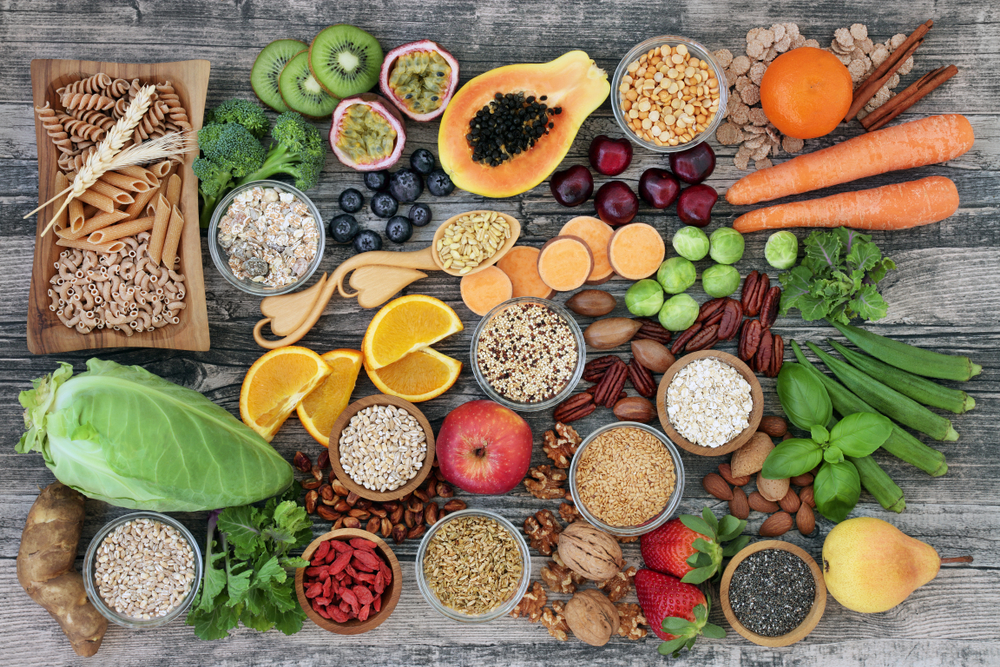The Importance of Dietary Fiber

Dietary fiber is an essential component of a healthy diet. It is defined as the plant compounds that resist digestion by the human gut, but undergo complete or partial fermentation by gut microbiota.
Health benefits of fiber
Good sources of dietary fiber include whole grains, fruits and vegetables, as well as nuts and legumes. Fiber in food has been shown to reduce the risk of various medical conditions. The suggested benefits of fiber in each condition are outlined below.
Breast cancer
According to some investigators, this risk is believed to be lowered by an early intake of high dietary fiber, from childhood through adolescence and into early adult life, but commencing such a diet in adult life is not linked to the same benefit. Fruits and vegetable intake seem to confer a higher level of protection in this case.
Type 2 diabetes
A high fiber diet cuts the risk of diabetes in half by reducing high spikes in blood sugar. The glycemic index of fiber-rich foods is low, because they cause only a small rise in the post-prandial(after feeding) blood sugar level, and thus a reduction in the need for insulin production. This spares the pancreatic cell reserve.
Fiber also increases the insulin sensitivity of the peripheral glucose-utilizing tissues, such as skeletal muscle, liver, and fatty tissue. Insulin promotes early uptake of glucose by the cells of these tissues and therefore leads to the normalization of the blood sugar soon after eating a meal. Some studies have shown that adding 12g of fiber to the daily diet may be linked to a 22% lowering of diabetes risk.
These studies have shown that this finding holds good for all ages and various ranges of body mass index (BMI), as well as for the status of physical activity, smoking, alcohol consumption, fat ingestion and a family history of diabetes.
An important addition to our knowledge in this field is the need for insoluble fiber, and especially that obtained from whole grains, nuts and seeds, rather than that acquired from fruit and vegetables, irrespective of the overall dietary fiber intake. Again, this may be because insoluble dietary fiber results in faster intestinal transit, which reduces absorption of digested carbohydrates.
Increased cereal fiber also improves insulin sensitivity by 8%, increasing the peripheral uptake of glucose, via the secretion of a substance called glucose-dependent insulintropic polypeptide (GIP) immediately following the intake of insoluble fiber.
GIP increases insulin levels in response to a meal. It also brings about appetite reduction and increased satiety, reducing the overall energy intake. Dietary fiber is also relatively rich in magnesium, the deficiency of which is common in diabetes and reduces the activity of the important enzyme tyrosine kinase at the insulin receptor, which may contribute to insulin resistance.
Diverticular disease of the colon
This is an inflammatory condition of the lower GI tract, which is most commonly seen in the elderly population. It is believed that having adequate insoluble fiber in the diet cuts this risk by up to 40%.
Hyperlipidemia or high blood cholesterol
A high fiber diet has been shown to reduce the levels of blood cholesterol.

Nutritional benefits
Dietary fiber, in its natural state, is associated with many phytochemicals, such as plant polyphenols, isoflavones and flavonoids, lignans and carotenoids, as well as with vitamins and minerals, as for instance in the aleurone layer of wheat grains. This may explain why fruit, vegetables, whole grains and nuts have a beneficial effect on so many health conditions.
Metabolic syndrome
High fiber diets could play a crucial role in lowering the risk of metabolic syndrome, which includes hyperinsulinemia, hyperglycemia, low HDL levels, obesity or overweight, and hypertension. Metabolic syndrome is a known high-risk factor for heart disease and diabetes.
Obesity
An excessive BMI is associated with increased risk of type 2 diabetes, heart disease, cancers and osteoarthritis. Its treatment is closely related to limiting energy intake. Dietary fiber plays a huge role in this aspect, because it produces a feeling of satiety and thus keeps the person feeling full for a longer time, thereby reducing overall calorie intake.
One study reported an average loss of over 4.4 lbs, primarily of body fat, when the dietary fiber was increased by 8g for every 1000 calories. The most important aspect was that this loss did not depend upon the baseline dietary intake of energy or of fiber, the level of physical activity or the age. Other studies show that for each additional 20g of bran intake per day, the weight went down by 0.8 lbs, and for each 40g increase in whole grains, weight gain was lowered by 1.1 lbs.
This is due to the production of glucagon-like peptide 1 (GLP-1) and peptide YY from fermentation of fiber by gut microbes. Both of these produce the feeling of satiety. Another explanation is the reduced fat intake with increased dietary fiber. The third reason may be the lowering of the total metabolizable energy in the diet. This refers to the overall energy from food without the loss of energy in feces, urine and combustible gases, which loss increases with the percentage of total dietary fiber.
An important caveat here is the synergistic effect of soluble fiber upon metabolizable energy when the diet is high in fat. This may be because soluble fiber supports increased proliferation of gut bacteria, which in turn ferments short-chain fatty acids (SCFA) in the diet, increasing their utilization and energy absorption.
The gummy substance formed by the dissolution of soluble fiber in water may also delay intestinal transit and allow greater time for energy digestion and absorption, though this effect is debated. However, insoluble fiber reduces energy digestion by speeding up food passage through the gut.
The importance of this finding lies in the type of fiber, which should be supplemented to optimize weight loss on different diets. Insoluble fiber is better at reducing metabolizable energy when on a high-fat or average diet, whereas on a low-fat diet, either type of fiber is recommended.
Constipation
This is one of the most common symptoms related to the gut in the US and it is largely caused by a diet high in animal and low in plant-based foods. Wheat and oat bran fiber is the most effective at producing soft regular stools, even more than fruits and vegetables. This also prevents the pooling or stasis of toxins in the gut lumen, which is believed to be linked to intestinal oncogenesis.
Conclusion
It is very important to investigate further how much and what type of dietary fiber will help to control glucose metabolism in diagnosed diabetics, pre-diabetics and other at-risk populations, on the basis of the observed favorable effects of fiber on glucose metabolism in healthy people.
Including whole grains, legumes, nuts and seeds, as well as a variety of other seasonal fruits and vegetables, in the diet, besides substituting them for animal products three or more times a week, is likely to bring about a host of beneficial metabolic changes in the body.
